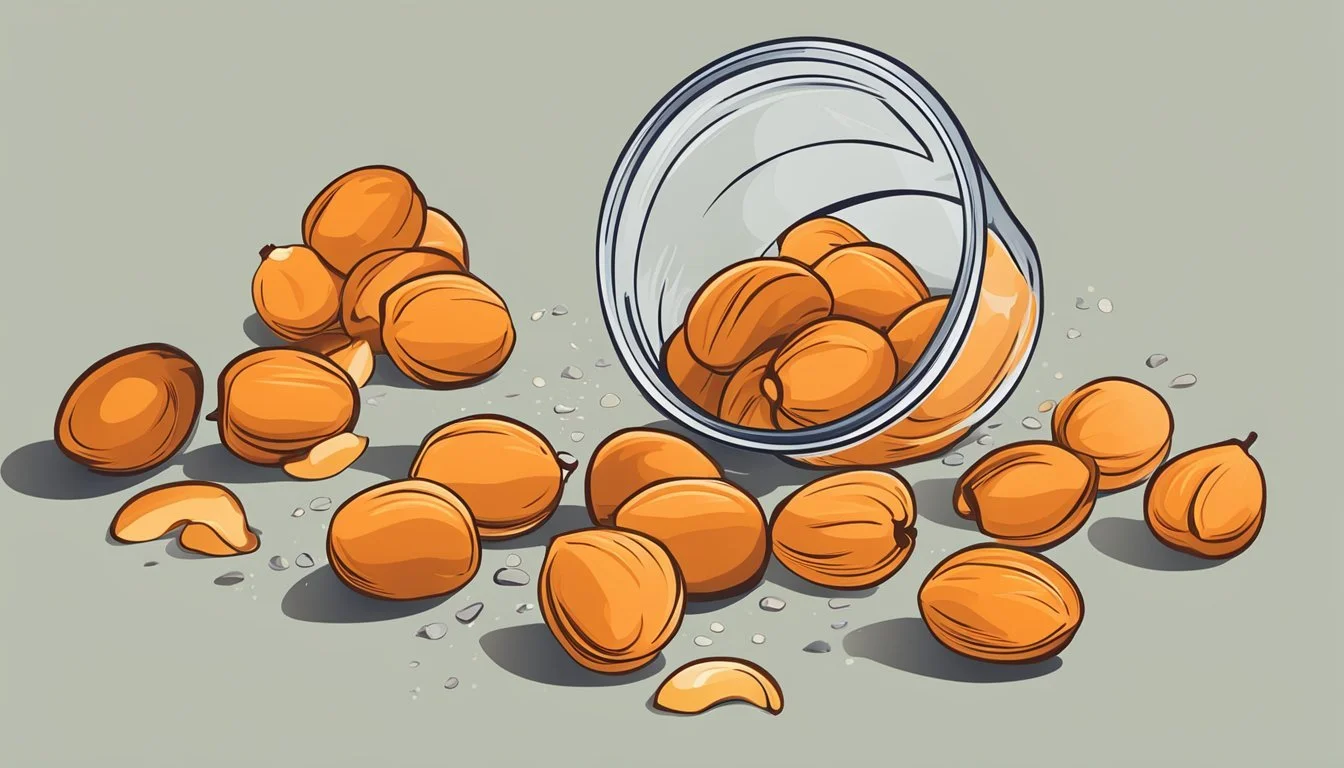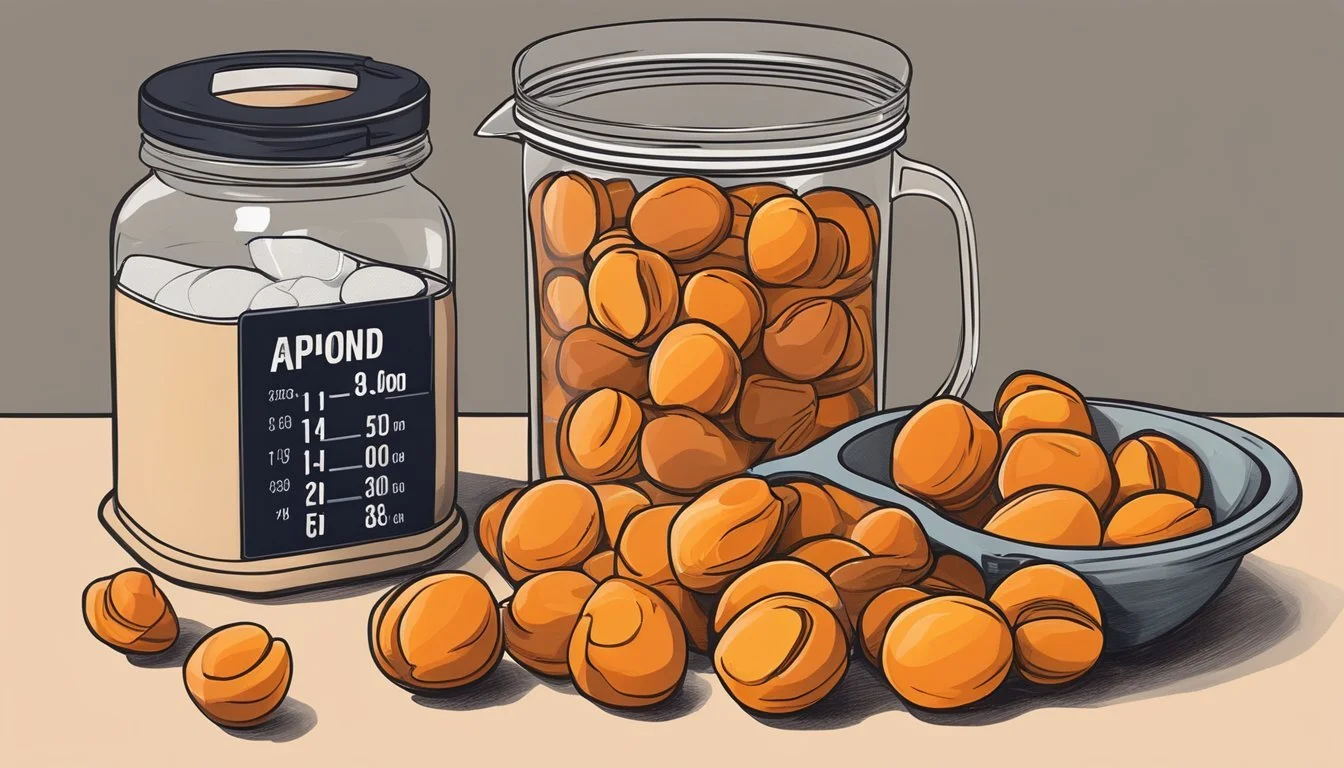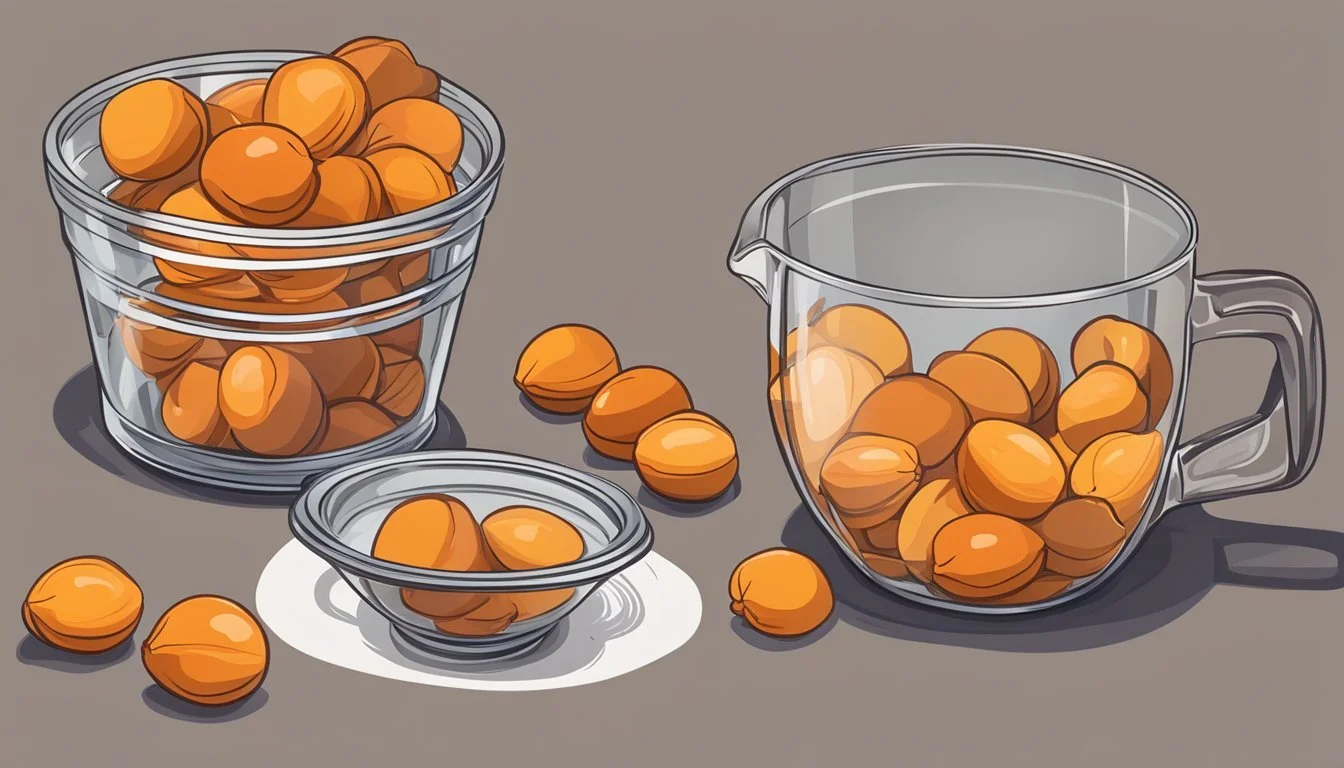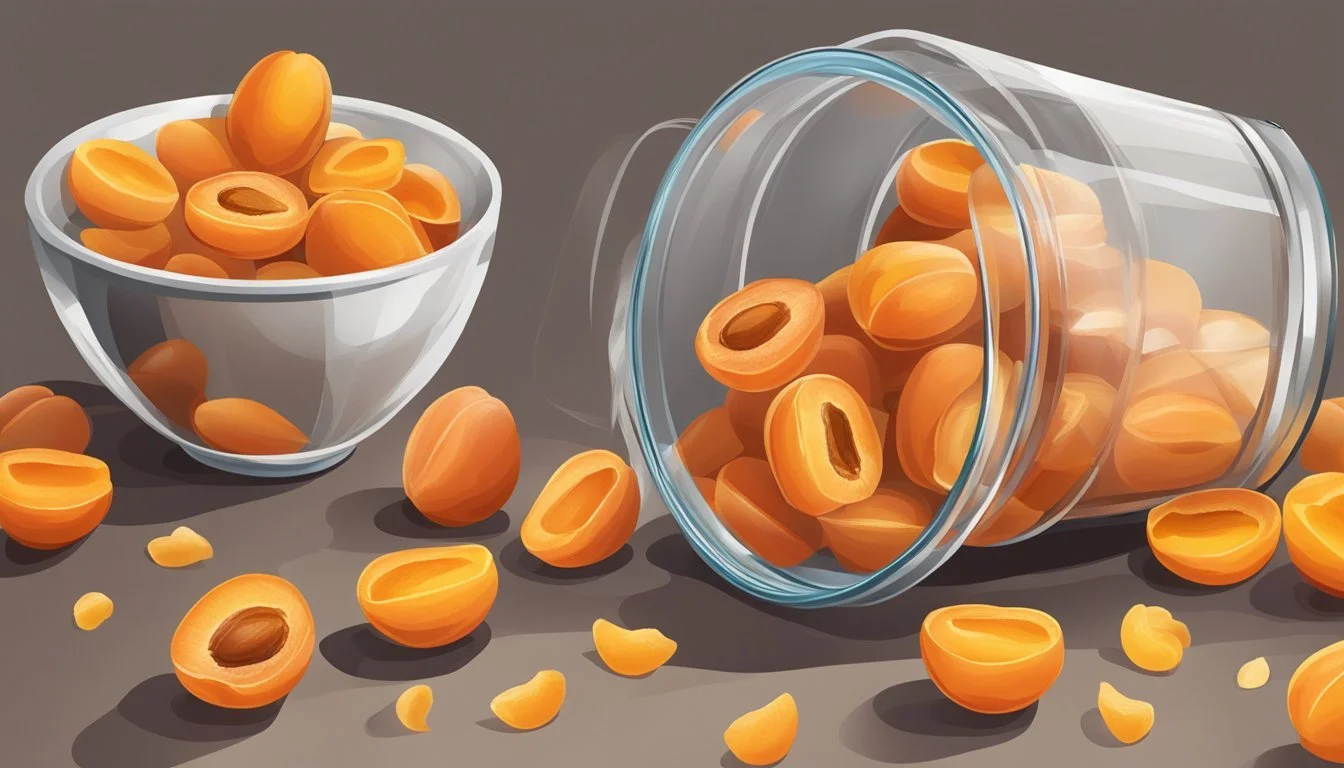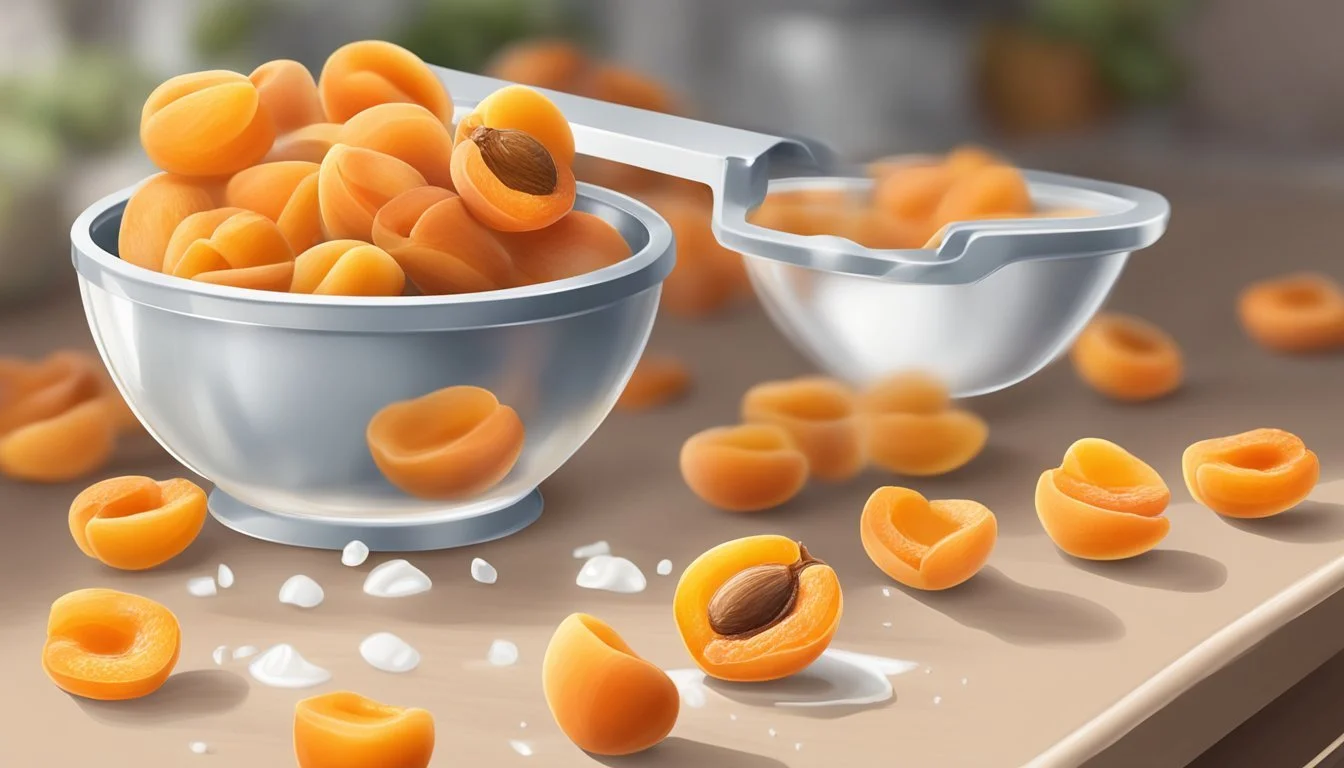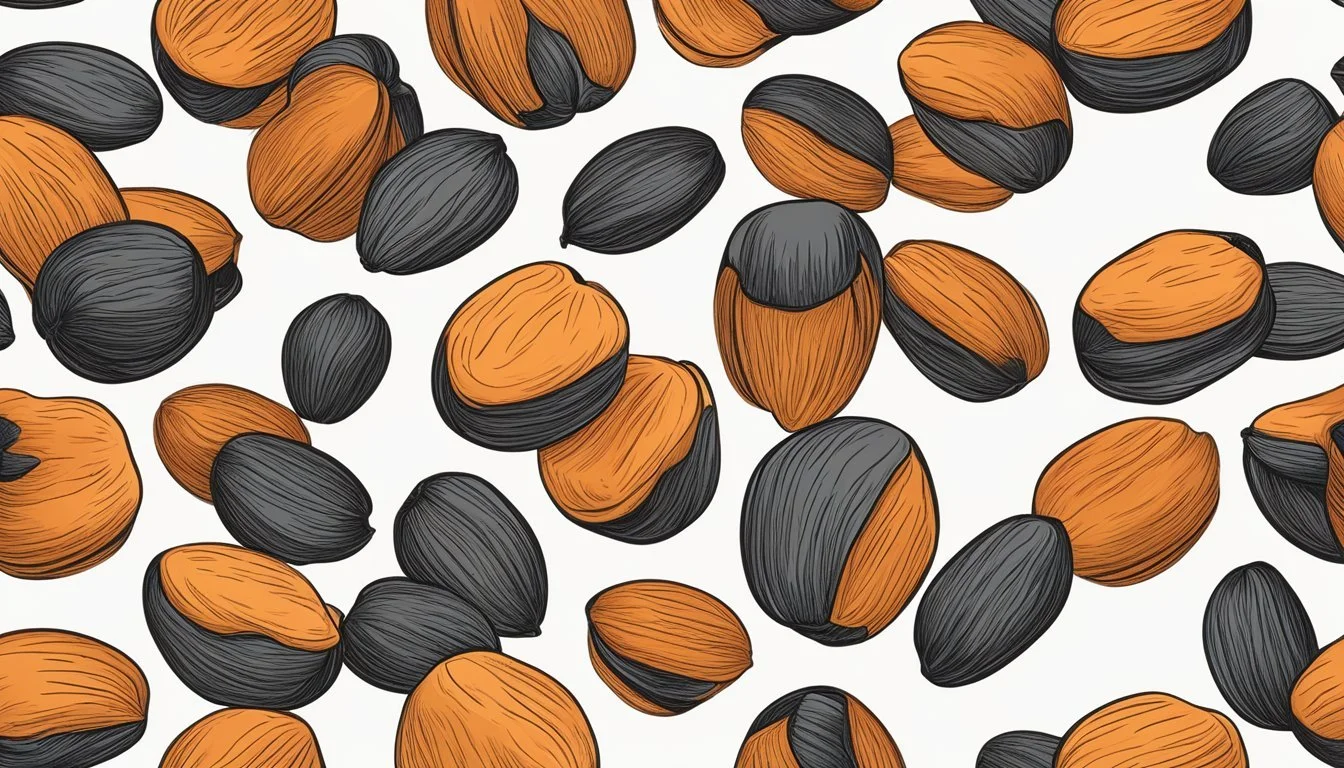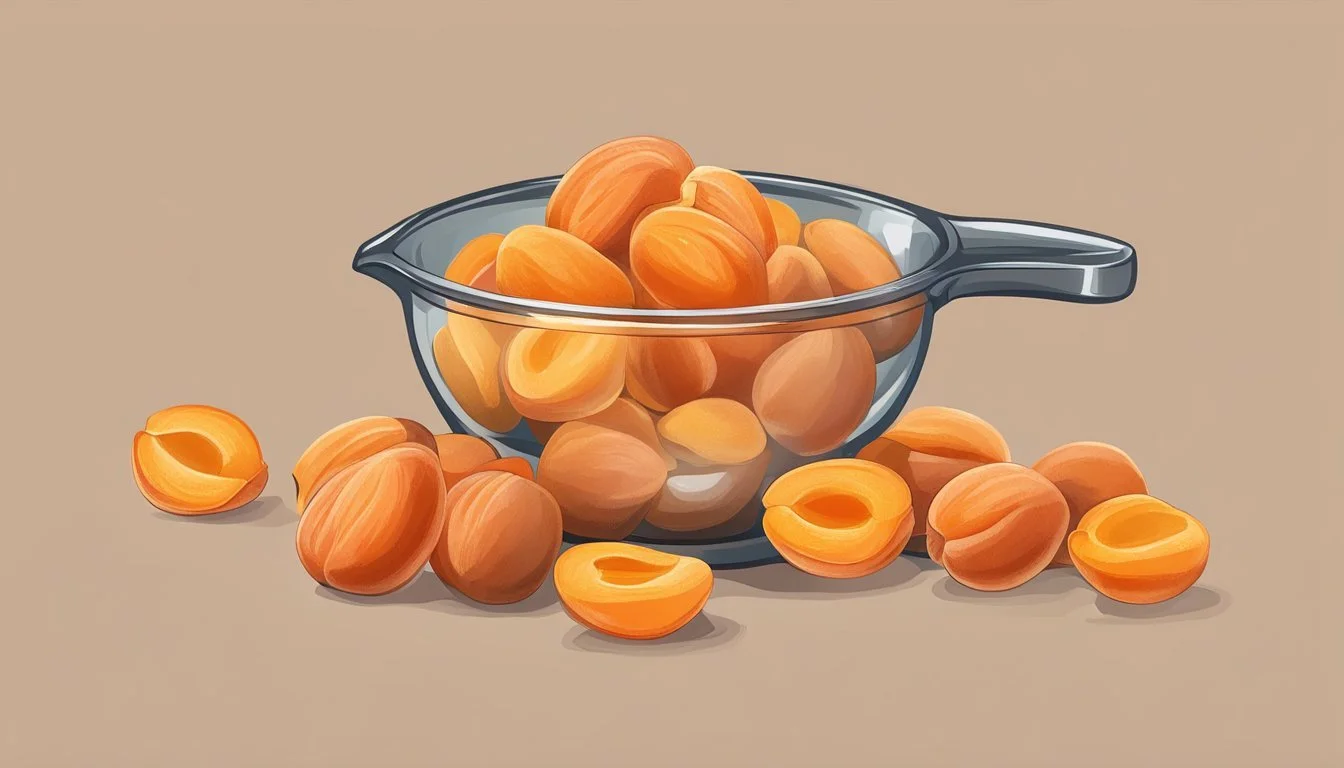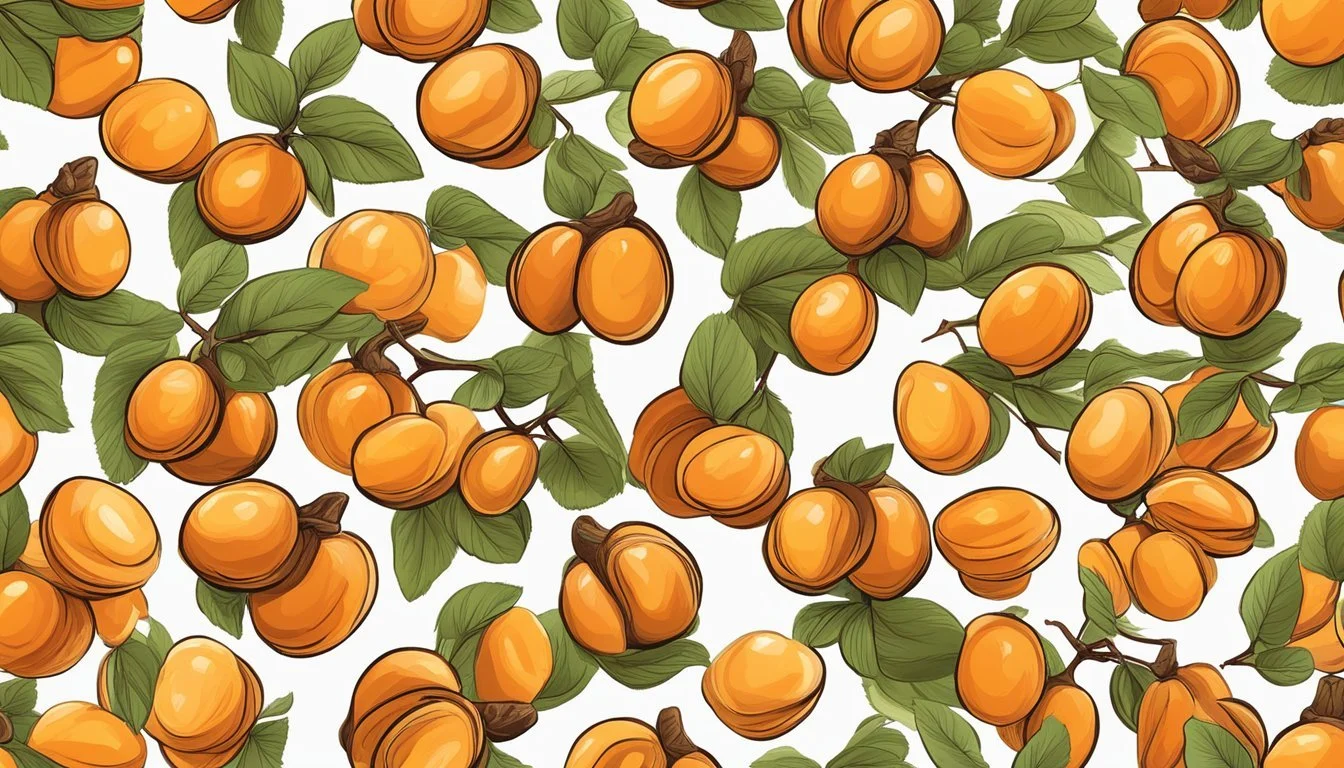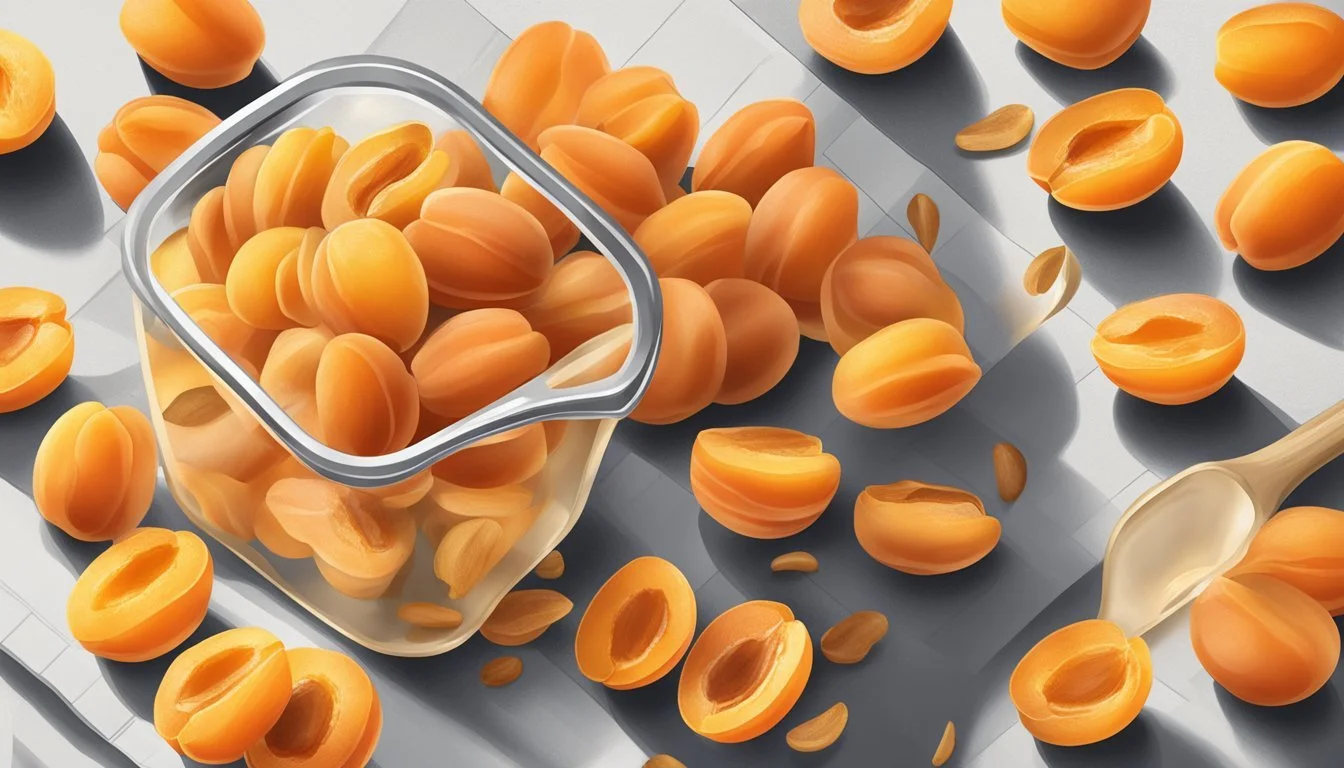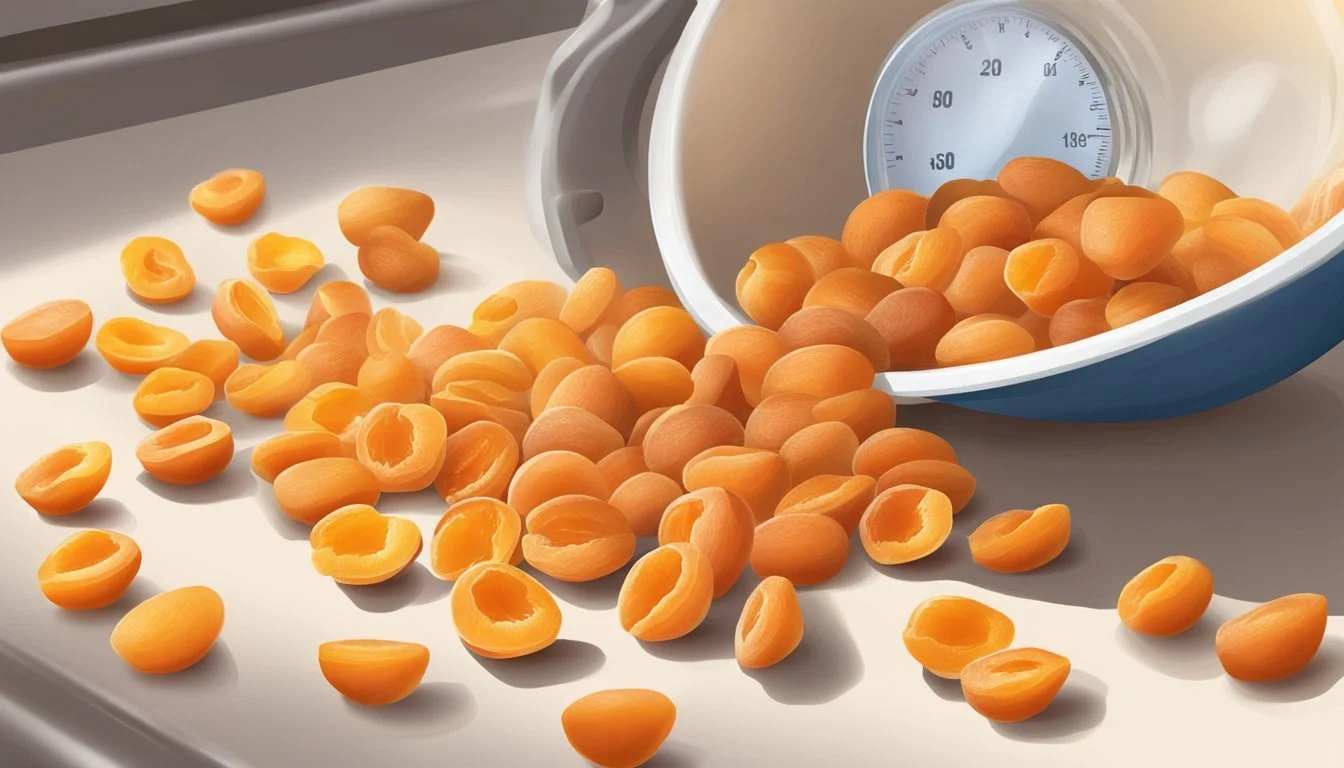How Many Cups in a Pound of Dried Apricots
Accurate Measurement Guide
Understanding the conversion of weight to volume is essential in cooking, especially when dealing with dried fruits (What wine goes well with dried fruits?) like apricots, where precision can affect the outcome of a recipe. Dried apricots, a staple in many kitchens, are often used in baking and cooking for their sweet flavor and health benefits. When a recipe calls for a pound of dried apricots, knowing how many cups this equates to is vital in ensuring the correct proportion of ingredients.
One pound of dried apricots typically translates to about 3 to 3.5 cups. This approximation can be useful for those looking to substitute fresh apricots with dried in recipes or making adjustments for dietary needs. The volume may vary slightly depending on the size and packing of the apricots, but using this estimate provides a solid foundation for accurate measurement. Accurate food conversion helps maintain the integrity of a recipe's texture and flavor profiles.
It's important for cooks and bakers to note that while weight is a more reliable measurement since it is unaffected by the size or density of the apricots, not everyone has access to a kitchen scale. Thus, using cups as a measure for volume remains a common practice in many households. When using cups to measure dried apricots, it's advised to chop them before measuring to ensure a more accurate volume and to account for the space that whole apricots might leave.
Understanding Dried Apricots
Dried apricots are a popular snack and culinary ingredient. They are created by removing water from fresh apricots, which concentrates the sugar content and extends shelf life. When apricots are dried, their nutritional profile changes; the drying process results in a higher sugar concentration by weight compared to their fresh counterparts.
Nutrition Facts: Dried apricots are known for their nutritional benefits. As a source of energy, they are richer in sugar content after dehydration. They still contain protein, albeit in small quantities, and have minimal fat. The fiber content remains substantial, promoting digestive health.
The nutritional value can vary based on the drying method. Sun-dried apricots retain most of the vitamins and minerals found in fresh apricots. They are particularly high in Vitamin A and provide a good source of some B-vitamins and minerals such as potassium.
A key difference is the possible addition of sulphur dioxide, which is used to preserve color and extend shelf life. Some people might be sensitive to this preservative. Alternatively, organic or unsulphured dried apricots are often darker in color and have a coarser texture but are free from this additive.
Serving Size:
Weight (Pounds) Volume (Cups) 0.1 ~0.239 0.2 ~0.478 0.3 ~0.716 0.4 ~0.955
A typical serving size is roughly 1/4 cup of dried apricots, which may provide approximately 80-100 calories depending on the size and variety.
In their preparation, some dried apricots may be treated with a small amount of oil to prevent sticking. This can slightly alter their caloric and fat content. Those looking for natural drying techniques should opt for sun-dried options, which do not usually contain added oils or preservatives.
Conversion Basics
In the context of cooking or baking, understanding the relationship between weight and volume is critical for accuracy. This section provides specific conversions between cups and pounds for dried apricots, which can vary based on their size and moisture content.
Cups to Pounds
To convert cups to pounds of dried apricots, one should consider the density of the apricots, which affects the volume-to-weight ratio. Here's a basic guideline for this conversion:
1/4 cup of dried apricots ≈ 1.1 ounces ≈ 33 grams
1/3 cup of dried apricots ≈ specifics not provided
1/2 cup of dried apricots ≈ specifics not provided
1 cup of dried apricots ≈ specifics not provided
Given that there are 16 ounces in a pound, and approximately 28.35 grams in an ounce, these figures can be scaled to find the equivalent in pounds. However, it must be noted that there could be errors or omissions in the provided data, and using a kitchen scale will ensure the most accurate conversion.
Pounds to Cups
When converting pounds to cups, the density and volume of the dried apricots come into play. Based on the search results:
0.1 pound of dried apricots ≈ 0.239 US cup
1/5 pound (0.2 pound) of dried apricots ≈ 0.478 US cup
0.3 pound of dried apricots ≈ 0.716 US cup
0.4 pound of dried apricots ≈ specifics not provided
1.0 pound of dried apricots ≈ specifics not provided
The aforementioned ratios are useful for converting weights into volumetric measurements, particularly when recipes call for such specificity. They offer a general guideline, keeping in mind that the precision of such conversions might vary slightly due to factors like the cut and dryness of the fruit.
Measurement Techniques
When determining the conversion of dried apricots from pounds to cups, one must use accurate measurement techniques to ensure recipe success. Dried fruit like apricots can vary in size and density, so the precise number of cups may differ slightly.
Using a Kitchen Scale
For the most reliable results, using a kitchen scale to measure by weight is advisable. Measuring ingredients by weight (grams, ounces, pounds) is often more exact than using volume measurements like cups. One pound of dried apricots typically translates to about 3 to 3.5 cups. However, this can vary based on the apricots' size and moisture content.
Volume Measurement
If a scale is not at hand, using measuring cups can also give a rough estimate. Depending on the size of the chopped dried apricots, lightly fill the measuring cup and level it off for a more accurate measure.
Weight Approximate Volume 1 Pound 3 - 3.5 Cups 1 Ounce ~1/5 Cup 100 Grams ~2/3 Cup
Disclaimer: A level of error can exist when using volume measurements due to potential gaps and air pockets between the apricots.
When transitioning between the metric system and US customary units, one should also be aware of the conversion rates:
1 ounce ≈ 28.35 grams
1 pound ≈ 0.45 kilograms
1 cup of dried apricots ≈ 130 grams
Lastly, always consider the source of your ingredient measurements. Manufacturer's recommendations and recipe specifics can guide a more precise measurement if the pack includes such information.
Volume vs. Weight
When dealing with cooking ingredients like dried apricots, understanding the distinction between volume and weight is crucial for accuracy in recipes. Volume is the amount of space that an ingredient occupies, typically measured in cups, tablespoons, or milliliters. Weight, on the other hand, refers to the heaviness of an ingredient, commonly measured in pounds, grams, or ounces.
For dried apricots, the conversion between weight and volume is not direct due to their density and how they might be packed into a measuring cup. As a result, recipes often provide measurements in weight for more precision.
Here is an approximate equivalence between dried apricots by weight and their volume in cups:
Weight (pounds) Volume (cups) 0.1 0.24 0.5 0.48 0.3 0.72 0.4 0.96 1 2.39
To ensure accuracy when preparing a recipe, it's recommended to use a kitchen scale, as the volume of dried apricots can vary based on their size and how tightly they are packed into a cup. In recipes where precision is key, chefs should opt for weight measurements of dried apricots to ensure the desired outcome is achieved.
It's important to note that these equivalents may vary slightly by brand and specific type of dried apricot. In absence of a scale, the above table can assist home cooks in making more informed estimations.
Differences in Dried Fruit
When converting dried apricots to cup measurements, it's important to consider the characteristics unique to dried fruits. This section explores the nuances among dried fruit varieties, the methods of preparation, and their moisture content, all of which influence measurement and usage.
Varieties
Dried fruit varies considerably based on the type of fresh fruit from which it originates. Dried apricots, for instance, differ from other dried fruits like raisins or dates in calorie and carbohydrate content, as well as in size and density. Sliced or chopped dried fruit may also lead to different cup measurements.
Dried Apricots: Higher in calories; approximately 1 pound is equivalent to 2.5 to 3 US cups when chopped.
Raisins: Smaller and more dense; a common serving size is 1/4 cup.
Preparation Methods
The method by which fruit is dried, such as sun-drying or using dehydrators, affects its final density and volume. Additionally, whether the fruit is left whole, sliced, or chopped can impact the conversion rate to cup measurements. Some dried fruits, like apricots, may be sold pre-sliced, influencing the cup conversion due to the increased air space between pieces.
Sun-Dried: May retain more moisture, leading to less shrinkage.
Dehydrated: Often results in a more consistent and drier product.
Moisture Content
Dried fruits have significantly less moisture compared to their fresh counterparts, resulting in a concentration of both calories and carbohydrates. The moisture content can vary, however, based on how long the fruit was dried and the method used. Rehydrated dried fruit, or dried fruit that has been cooked or frozen, will have different cup measurements due to the change in water content.
Dried Apricots: Typically have a lower moisture content than other dried fruits like prunes, affecting volume-to-weight ratios.
Rehydrated Fruit: When dried fruit is rehydrated, it will not return to the original volume of the fresh fruit.
Practical Usage in Recipes
When incorporating dried apricots into recipes, it is vital to consider their role, quantity, and the desired outcome. A pound of dried apricots typically converts to roughly 2 ¾ cups when measuring them in their whole form. This conversion is crucial for recipes that depend on precise measurements such as baked goods or preserves.
Dried apricots are often found in fruit-centric dishes, where they bring a concentrated sweetness and chewy texture. In such recipes, apricots can be stewed or cooked to soften their texture and meld their flavors with other ingredients. They are an excellent addition to a healthful trail mix, pairing well with other dried fruits like cranberries, and with nuts such as almonds and walnuts, offering an appealing mix of sweet and savory, chewy and crunchy.
Here's a quick guide to substituting dried fruits and nuts in recipes:
Ingredient Amount Substitution Dried Apricots 1 cup 1 cup dried cranberries or other dried fruits Almonds 1 cup 1 cup walnuts or other nuts
When using dried apricots in recipes, remember that they are denser and less moist than fresh fruit. As a result, they may require hydration, through soaking or cooking, to achieve the desired consistency. For instance, in baking, they might be soaked in warm water or juice to revitalize their supple nature before being mixed into batter or dough.
Ultimately, dried apricots offer versatility in various dishes, from savory stews to sweet confections. Their use should be guided by the texture and flavor profile the chef aims to achieve in the final product.
Substituting Apricots in Recipes
When one wants to substitute dried apricots in recipes, there are multiple alternatives that can render both similar flavor and texture profiles, as well as nutritional benefits. Here's a concise guide on how to replace apricots effectively without compromising the quality of the dish.
Fresh Apricots: If the recipe calls for dried apricots, fresh apricots can be used when in season. It's essential to remember that they should be used in larger quantities since they contain more water and are less concentrated in flavor.
Dried Fruits: Dates, with their sweet, sticky quality, serve as a perfect stand-in. Their sugary profile and texture closely mimic those of dried apricots. Figs, both fresh and dried, owing to their sweetness and chewy flesh, can be used too, albeit with a unique flavor twist.
Fruit Substitute Ratio (for 1 cup of dried apricots) Fresh Apricots 1 1/2 cups, sliced Dried Peaches 1 cup, chopped Dried Apples 1 cup, chopped Dried Berries 1 cup Dried Plums (Prunes) 1 cup, chopped Dates 1 cup, pitted and chopped
Citrus Zest: For a hint of acidity and vibrant aroma, zests of lemon or orange can be sparingly added to recipes as partial substitutes for apricots.
Considerations for Texture and Sweetness:
Texture: When considering fruits like berries or pears, it's important to pay attention to their moisture levels and texture which may differ significantly from that of dried apricots. Pears, which can often be juicier, may not provide the same chewiness.
Sweetness: Some substitutes like apples might be less sweet than apricots, which means a recipe may benefit from a slight increase in added sugars or sweeteners.
It's vital to consider that each substitute will bring its unique flavor and texture to the dish. While they may not replicate the exact taste of apricots, they can contribute their delightful characteristics making the dish special in its own right.
Nutritional Benefits
Dried apricots are a nutritional powerhouse with a variety of essential vitamins and minerals. They are a notable source of fiber, which aids in digestion and contributes to heart health. A typical serving can deliver an impressive dose of this nutrient.
Rich in both vitamin A and carotenoids, dried apricots are beneficial for eye health and the immune system. They also provide a small yet valuable amount of vitamin E, which acts as a powerful antioxidant, supporting skin health and offering protective effects against cellular damage.
In terms of minerals, dried apricots contain calcium and iron, both vital for bone health and blood function, respectively. They also offer a modest amount of magnesium, phosphorus, and potassium. These minerals are crucial for maintaining normal muscle function, nerve function, and overall cellular health.
The nutritional content of dried apricots per 30-gram serving is substantial:
Protein: Necessary for tissue repair and the building of muscles, though present in smaller amounts.
Carbohydrate: Provides a quick source of energy.
Fat: Contains very low fat, contributing minimally to dietary fat intake.
Here is a summarized nutritional profile:
Nutrient Amount per 30g Serving Fiber Good amount Vitamin A 54 mcg (6% DV) Vitamin E 1.4 mg Calcium Small amounts Iron Small amounts Magnesium Small amounts Phosphorus Small amounts Potassium Small amounts
Ultimately, dried apricots can be integrated into a diet to benefit from their diverse nutrients, enhancing overall dietary quality.
Storage and Shelf Life
When it comes to preserving dried apricots, they exhibit a commendable shelf life due to the dehydration process they undergo. Storage conditions play a pivotal role in maintaining their quality and extending this period.
At Room Temperature:
Container: Sealed, airtight containers
Location: Cool, dry place away from sunlight
Shelf Life: 6 to 12 months
Refrigerated Storage:
Container: Airtight containers or resealable plastic bags
Temperature: 32-40°F (0-4°C)
Shelf Life: Up to 1 year
Freezer Option:
Container: Freezer-safe bags or containers
Temperature: 0°F (-18°C) or lower
Shelf Life: 12 to 18 months
Temperature consistency is crucial; fluctuations can diminish the quality of dried apricots. For optimal preservation, they should be stored in an environment where the temperature is steadily maintained between 50-70°F (10-21°C).
For sun-dried apricots, whilst they are shelf-stable, they also benefit significantly from these controlled storage methods to prolong their freshness. It is advisable to inspect the fruit periodically for any signs of spoilage or moisture, which can lead to mold growth.
In all cases, ensuring the dried apricots remain sealed after opening is imperative to prevent exposure to moisture and contaminants, thereby protecting their taste and nutritional integrity.
Health Considerations
Dried apricots are a favored snack for their sweet taste and health benefits. However, when considering their impact on health, it is important to be mindful of their sugar content. They contain natural sugars, which concentrate as the fruit dries, potentially affecting blood sugar levels. Individuals should monitor portions to manage intake.
Rich in dietary fiber, dried apricots support digestive health. Fiber aids in promoting a feeling of fullness, which can help control appetite. The fruit's fiber is beneficial for cardiovascular health as well, as it assists in lowering cholesterol levels.
Minerals are abundant in dried apricots. They offer a source of:
Calcium
Iron
Magnesium
Phosphorus
Potassium
These minerals contribute to bone health, proper muscle function, and maintaining an electrolyte balance.
In terms of calories, a 1/4 cup serving of dried apricots typically has between 80-100 calories. This is a moderate amount, making them a suitable option for calorie-controlled diets when consumed in appropriate portions.
Regarding fats, dried apricots have very low fat content, making them a heart-healthy choice.
Dried apricots are a significant source of Vitamin A and Vitamin E —diverse vitamins essential for immune function, skin health, and eye health.
Finally, when purchasing dried apricots, consumers should be aware that some brands use sulphur dioxide as a preservative. This substance can cause allergic reactions in sensitive individuals and may exacerbate asthma. Those with sensitivities should look for organic or unsulphured varieties.
In sum, dried apricots can be a nutritious addition to the diet, but like all foods, should be enjoyed in moderation and chosen carefully based on individual health needs.
Culinary Tips
When incorporating dried apricots into recipes, chefs should note that these fruits add a concentrated sweetness and a distinct tart flavor profile. The process of drying fruits, including apricots, reduces their original size while intensifying both their sweetness and tartness, which can significantly impact the flavor balance of a dish.
For dishes requiring sliced or chopped dried apricots, it's advisable to prepare them with precision to ensure even distribution of flavor and texture. A common tip for chopping dried apricots more easily is to:
Lightly coat them with flour to prevent sticking. This also helps to seamlessly incorporate them into the rest of the ingredients.
For cooking with dried apricots, chefs may opt to rehydrate them before use, especially in recipes where a plumper texture is preferred. To rehydrate:
Place the dried apricots in a bowl.
Cover them with hot water or a warm flavored liquid, such as orange juice, to impart extra flavor.
Allow them to soak until they plump up, typically around 15 to 30 minutes.
Measure Dried Apricots 1 pound ~2 ¾ cups dried 1 pound ~5 cups cooked
This approximation can be slightly altered based on moisture content and size of the dried apricots in question, thus weighing is always the most reliable method for accuracy in measurements. Cooks should remember that the drying process concentrates not only the fruit's flavors but also its natural sugars, meaning fewer dried apricots are needed compared to fresh ones to achieve the same sweetness level in recipes.
Conclusion
When converting dried apricot measurements, precision is key, particularly in recipes requiring accurate proportions for desired outcomes. One pound of dried apricots typically equates to 2.75 cups.
Using a kitchen scale is the most reliable method for accurate measurement, as dried apricots can vary in size and moisture content. In cooking, these conversions are valuable for ingredient substitutions or adjusting serving sizes.
Concerning nutrition, dried apricots are dense with nutrients, offering vitamins A and E, while also being low in sodium. This makes them a healthful addition to a balanced diet.
Below is a concise reference for dried apricot conversions:
Weight (Pounds) Equivalent (Cups) 0.1 0.239 0.5 1.375 1 2.75
For culinary enthusiasts or those mindful of their dietary intake, these measurements can serve to maintain the integrity of a recipe or track nutritional intake effectively.

